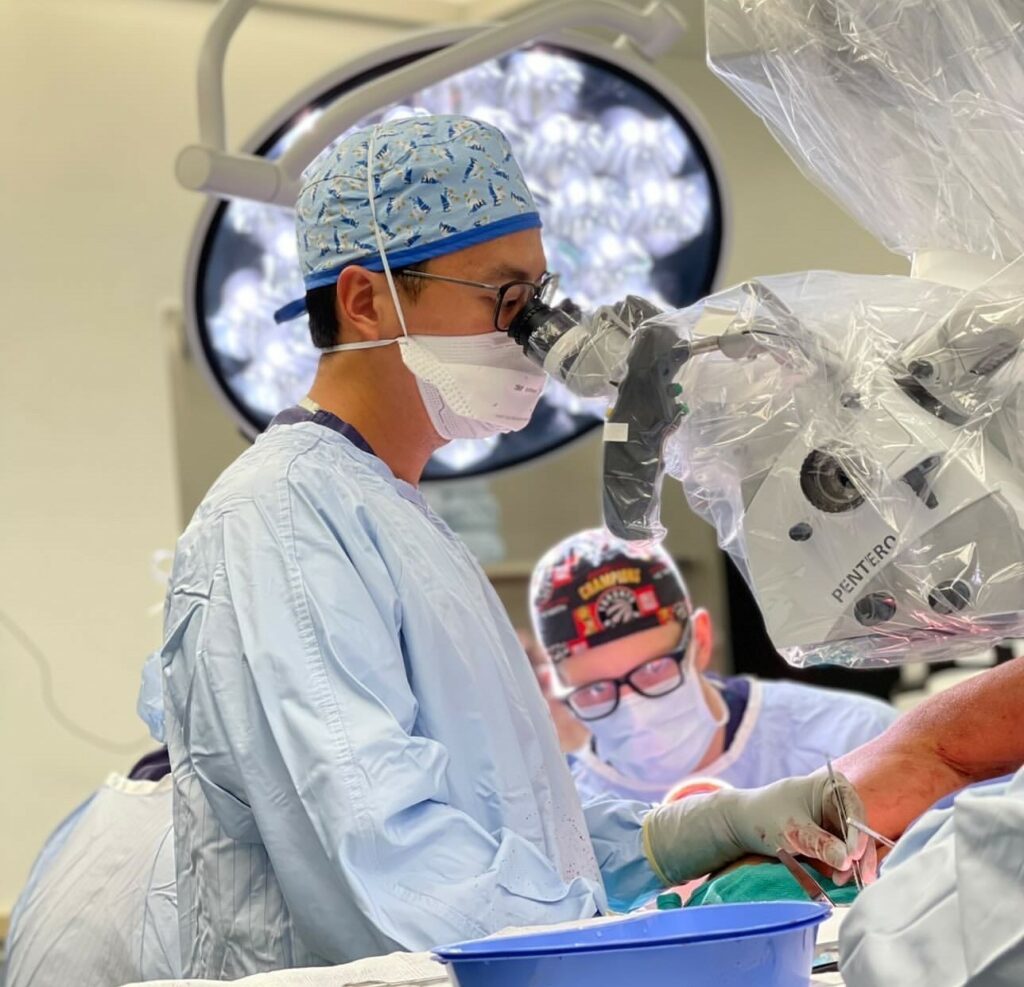Putting the Puzzle Together: How One Surgeon Approaches Complex Procedures

Jonathan Shum, DDS, MD, is a board certified surgeon in oral and maxillofacial surgery, and is an Assistant Professor at McGovern Medical School at The University of Texas Health Science Center at Houston. His practice is centered on oral, head and neck oncology, microvascular reconstruction, and facial trauma — which makes him a frequent collaborator with MedCAD. We asked him a few questions about his practice, his approach to medicine, and the future of medical implants.
Q: What led you into your specialty of Oral and Maxillofacial Surgery?
I started out as a dentist, and got my DDS from the University of Toronto. But I quickly realized that I enjoyed helping people in a more comprehensive way, in terms of trauma and head and neck pathology. That naturally led me to perusing oral and maxillofacial surgery. I had gotten a taste of it in dental school, but I wanted to become an expert.
My training took me to Baltimore, New York, Portland, and Detroit, working with great doctors everywhere I went. I was — and really, still am — eager to put myself in as many learning experiences as possible so that I can better manage patients who need that kind of care.
Q: What’s the best part of your job?
Maybe the best part of my job is that there isn’t a “best” part. I get to work with others in a team environment. I get to mentor trainees that may be students, residents, or fellows. And of course, I get to help patients. So maybe the question is “What makes this the best job?”
Q: How do you integrate teaching into your practice, and vice versa?
It’s always just felt natural for me to teach, which is why The University of Texas Health Science Center at Houston us such a great fit for me. Here, teaching is just part of the job as an academic, university-based surgeon.
And of course, I’m always learning new techniques, new approaches, new technology, and from new viewpoints that my students bring. I’ve done two clinical surgical fellowships since getting my MD, one in oral, head and neck oncology and another in microvascular reconstruction.
Q: Much of your practice involves patients with cancer. How are those cases different from trauma cases?
Both are managing patients who have had the misfortune to have to deal with such a diagnosis. Neither one is easy, and each has its complexities. With cancer cases, however, we have to be very mindful of urgency. It is a disease process that will continue to grow and destroy surrounding structures, so if there is a lag between planning and fabrication of the implant, then the implant may not be suitable for the patient because the cancer margin will continue to progress. We also have to be mindful of utilizing techniques that can prepare the patient for the need of radiation therapy.
In trauma cases, we usually aren’t working with patients who have had prior surgery, and they haven’t had to deal with radiation or effects of chemotherapy. So the process, even if it’s complicated and multi-step, tends to have a more defined beginning and end.
Q: Are some cases more challenging than others? How do you and our designers overcome that difficulty?
The most challenging cases are when they are dealing with multiple sub-sites of the face, such as the upper jaw and lower jaw, or jaw and eye. Then we’re dealing with multiple variables, and it becomes tricky because the types of constructions we can utilize limits the way we can approach the reconstruction.
When I’m working with an engineer to create an implant for those sorts of procedures, we’re often putting together a jigsaw puzzle without a picture to work from. We fall back on principles of reestablishing form and the function we’re trying to reestablish — things like eating, talking, supporting the eye — and work from there.
Q: Are your patients ever active in the design process with you? How informed are they about the implants that are going in?
I often show patients the substructure of the implants that hold their reconstruction together. When utilizing dental implants, we consult with the prosthodontist or dentist to find the ideal set up for their dentition. We want to see how the patients move, and hear about their expectations for the outcome.
Q: You’re one of our leading-edge surgeons — one of the first to use our 3D-printed titanium plates, and first to use a threaded plate. Are there other innovations you’re looking forward to integrating in your practice?
My big hope for the future is less about technology and design than it is about materials — though of course it would be great if access to very quick fabrication was more widespread. I look forward to the day companies can bioprint biocompatible materials that could replace the need for autogenous grafts.
Titanium is an incredible material, but I think we’re not too far away from being able to print parts that integrate with the human body and truly facilitate healing.
Q: Was there any other interest that might have pulled you away from medicine? If so, is that still a part of your life?
I’ve always enjoyed music, and I once thought that being a DJ would be cool, though I never really had the equipment to get the people going on the dance floor. With the wisdom of years, I’ve decided that hearing is important, and maybe it’s a good thing that I didn’t follow that career path.
